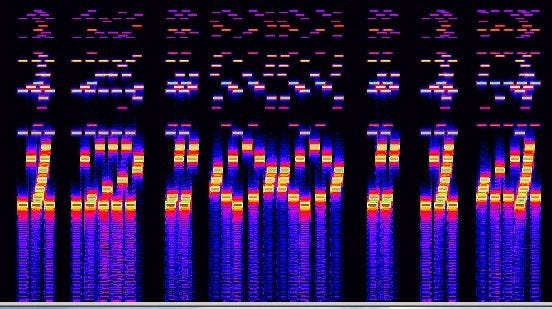Exploring Amateur Radio Digital Modes: A Guide to Low-Power, High-Performance Communication
Amateur radio, often called ham radio, has evolved significantly over the years. While voice and Morse code (CW) communications remain popular, digital modes have revolutionized the hobby, enabling operators to communicate effectively even under challenging conditions. Digital modes offer superior performance in low-power (QRP) operation and can penetrate noise and interference where traditional modes fail. This article explores the various digital modes available to amateur radio operators, including their strengths and ideal use cases.
The Advantages of Digital Modes in Amateur Radio
Digital modes provide several advantages over voice and CW transmissions:
Low Power Efficiency: Many digital modes function effectively with as little as 5 watts of power, making them ideal for QRP operation.
Resilience to Noise and Weak Signals: Unlike voice communication, where static and interference degrade intelligibility, digital signals often remain readable despite weak propagation conditions.
Automated and Hands-Free Operation: Many digital modes can be configured to send and receive messages autonomously, making them useful for long-duration contacts and emergency communication.
Narrow Bandwidth: Some digital modes use very little spectrum, allowing multiple stations to operate simultaneously without excessive interference.
Common Digital Modes in Amateur Radio
1. RTTY (Radioteletype)
RTTY is one of the oldest digital modes, dating back to the early 20th century. It operates using Frequency Shift Keying (FSK), where two tones represent binary values. Despite its age, RTTY remains popular for contests and casual QSOs.
Advantages:
Well-supported in nearly all ham radio software.
Easy to decode manually if needed.
Reliable under moderate conditions.
2. PSK31 (Phase Shift Keying 31 Baud)
PSK31 was designed for low-bandwidth, weak-signal communications. It uses phase shift keying to encode characters efficiently, often allowing contacts with very low power levels.
Advantages:
Extremely narrow bandwidth (~31 Hz), minimizing interference.
Very effective under weak signal conditions.
Easily decoded with simple software and a computer sound card.
3. FT8 and FT4 (Weak-Signal Communication)
Developed by Joe Taylor (K1JT), FT8 and FT4 are part of the WSJT-X suite and are specifically designed for weak signal conditions. FT8, in particular, has revolutionized ham radio by enabling contacts at near-noise-floor levels.
Advantages:
Contacts can be made with signals as low as -24 dB below the noise floor.
Efficient and structured communication format, making QSOs quick and precise.
Popular for DXing and low-power enthusiasts.
4. MFSK (Multiple Frequency Shift Keying) and Olivia
MFSK-based modes, such as Olivia, use multiple tones to increase resilience against noise and fading.
Advantages:
Highly resistant to interference and fading.
Ideal for emergency communications and long-distance weak-signal contacts.
Can function with weak signals where other modes fail.
5. JT65 and JT9
Similar to FT8 but with longer transmission periods, these modes were designed for extreme weak-signal conditions, such as moonbounce (EME) communications.
Advantages:
Capable of decoding signals well below the noise floor.
Used for specialized contacts where other modes struggle.
6. Hellschreiber (Feld Hell)
Hellschreiber, also known as Feld Hell, is a fascinating digital mode that operates by visually displaying received text as if it were printed on paper. Unlike other digital modes that rely on precise decoding algorithms, Hellschreiber is designed for human readability.
Advantages:
Works effectively even in high noise and poor propagation conditions.
Unique visual display allows partial messages to be understood even if corrupted.
Fun and historically significant mode for radio enthusiasts.
7. Packet Radio (AX.25 Protocol)
Packet radio transmits data in small packets, similar to the way the internet functions. It is widely used for APRS (Automatic Packet Reporting System) and digital messaging.
Advantages:
Error-correcting capability ensures reliable transmission.
Supports real-time text messaging and data transmission.
Can be used with digipeaters for long-distance communication.
8. PACTOR and WINMOR
These modes were developed for reliable text-based communication over HF and are commonly used in maritime and emergency communications.
Advantages:
Efficient error correction for reliable message delivery.
Used for email transmission over HF bands.
9. D-STAR, DMR, and System Fusion (Digital Voice and Data Modes)
Unlike traditional digital data modes, these are used primarily for voice communication with digital data capabilities.
Advantages:
Enhanced voice clarity with error correction.
Integrated networking allows for worldwide communication via repeaters and internet linking.
Why Digital Modes Excel in Low-Power Operation
Many digital modes excel in low-power (QRP) scenarios because they can maintain reliable communication even with minimal signal strength. Several factors contribute to this:
Narrow Bandwidth: Modes like PSK31, FT8, and Olivia use extremely narrow signal bandwidths, allowing them to penetrate noise better than voice transmissions.
Forward Error Correction (FEC): Some modes incorporate error correction, enabling messages to be recovered even with missing or corrupted data.
Weak-Signal Optimization: FT8, JT65, and similar modes can decode signals well below the noise floor, making them ideal for low-power users.
Less Susceptibility to QRM and QRN: Digital signals often remain intelligible even in the presence of man-made (QRM) or natural (QRN) interference.
Conclusion
Digital modes have transformed amateur radio, enabling communication where voice and Morse code might struggle. Whether using low power, battling through heavy interference, or experimenting with cutting-edge weak-signal modes, digital communications offer a wealth of opportunities for ham radio operators. From the historic Hellschreiber to modern FT8 and beyond, these modes open doors to global communication with minimal power and maximum efficiency.
As digital technology continues to evolve, the future of amateur radio looks bright, with even more innovative and efficient modes on the horizon. Whether you’re a casual operator or a dedicated DXer, mastering digital modes will enhance your ability to communicate under any conditions.




